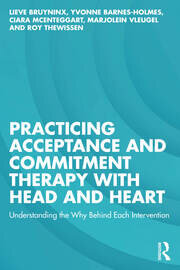This book will help readers balance the essential scientific concepts underlying Acceptance and Commitment Therapy (ACT) with their clinical practice, reconnecting ACT with its behavioural therapeutic roots and Relational Frame Theory.
Clinicians often struggle to understand the science (the “head”) that should underpin their clinical practice/work (the “heart”). Without a core understanding of the scientific concepts underlying ACT, clinicians struggle to understand how to adapt ACT in practice for specific client or group situations and why. In response to that, this book is structured to help readers understand the why of each intervention and how to use that to guide the next move. Through a mix of explanations, personal examples, exercises for the therapist, short cases, and metaphors, the book provides a series of science‑driven concepts that teach the reader to use the ACT toolbox with skilful interventions.
This manual is a must‑read for any ACT trainee or practitioner, helping them systematically connect techniques with the rationale for their use.
Table of Contents
Foreword: Standing at the cradle of art and science
ROBYN D. WALSER
Introduction
LIEVE BRUYNINX
1 What you need to know about connecting the heart of ACT with the head of ACT
LIEVE BRUYNINX
2 Identifying and understanding client stories: Exploring self‑as‑content
LIEVE BRUYNINX
3 Understanding and weakening fusion through defusion interventions
CIARA MCENTEGGART AND YVONNE BARNES‑HOLMES
4 Creative hopelessness and why it is so central in ACT
YVONNE BARNES‑HOLMES AND CIARA MCENTEGGART
5 Learning to stay in the here‑and‑now
MARJOLEIN VLEUGEL
6 Acceptance and willingness to embrace discomfort
MARJOLEIN VLEUGEL
7 Letting go of your story and taking control of your life from self‑as‑context
ROY THEWISSEN
8 Values‑oriented action from self‑as‑context
ROY THEWISSEN
9 Finally
LIEVE BRUYNINX

